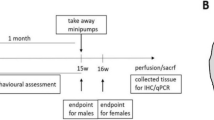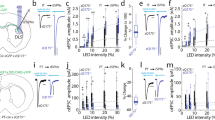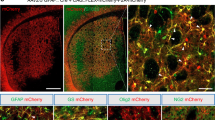Abstract
Reduced expression and disrupted corticostriatal transportation of brain-derived neurotrophic factor (BDNF) is proposed to contribute to the selective vulnerability of medium spiny striatal projection neurons (MSNs) in Huntington’s disease (HD). We have previously demonstrated that BDNF overexpression in the quinolinic acid lesioned rat striatum attenuates motor impairment and reduces the extent of MSN cell loss. To further investigate the potential therapeutic properties of BDNF for HD, the current study examines the effect of bilateral AAV1/2-mediated BDNF expression in the striatum of a transgenic rat model of HD. Transfer of the BDNF gene to striatal neurons using an AAV1/2 serotype vector enhanced BDNF protein levels in the striatum. Bilateral BDNF expression attenuated the impairment of both motor and cognitive function when compared with AAV1/2-vehicle- or YFP-treated transgenic HD rats. Interestingly, a gender effect was apparent with female transgenic HD rats exhibiting less functional impairment than males. Quantification of NeuN and DARRP32 immunoreactivity and striatal volume revealed limited disease phenotype between wild type and transgenic HD animals. However, AAV1/2-BDNF-treated transgenic HD rats showed evidence of greater striatal volume and increased NeuN+ cell numbers compared with wild-type vehicle- and AAV1/2-vehicle- or YFP-treated transgenic HD rats. We propose BDNF holds considerable therapeutic potential for alleviating behavioral dysfunction and neuronal degeneration in HD, with further work required to examine the role of BDNF-TrkB signaling and the preservation of axonal and synaptic function.
This is a preview of subscription content, access via your institution
Access options
Subscribe to this journal
Receive 12 print issues and online access
$259.00 per year
only $21.58 per issue
Buy this article
- Purchase on Springer Link
- Instant access to full article PDF
Prices may be subject to local taxes which are calculated during checkout










Similar content being viewed by others
References
Ross CA, Tabrizi SJ . Huntington’s disease: from molecular pathogenesis to clinical treatment. Lancet Neurol 2011; 10: 83–98.
Walker FO . Huntington's disease. Lancet 2007; 369: 218–228.
The Huntington's Disease Collaborative Research Group. A novel gene containing a trinucleotide repeat that is expanded and unstable on Huntington’s disease chromosomes. Cell 1993; 72: 971–983.
Zuccato C, Valenza M, Cattaneo E . Molecular mechanisms and potential therapeutical targets in Huntington's disease. Physiol Rev 2010; 90: 905–981.
Vonsattel JP, Keller C, Del Pilar Amaya M . Neuropathology of Huntington’s disease. Handb Clin Neurology 2008; 89: 599–618.
Altar CA . Anterograde transport of brain-derived neurotrophic factor and its role in the brain. Nature 1997; 389: 856–860.
Baquet ZC, Gorski JA, Jones KR . Early striatal dendrite deficits followed by neuron loss with advanced age in the absence of anterograde cortical brain-derived neurotrophic factor. J Neurosci 2004; 24: 4250–4258.
Ferrer I, Goutan E, Marin C, Rey MJ, Ribalta T . Brain-derived neurotrophic factor in Huntington disease. Brain Res 2000; 866: 257–261.
Zuccato C . Systematic assessment of BDNF and its receptor levels in human cortices affected by Huntington's disease. Brain Pathol 2008; 18: 225–238.
Zuccato C, Cattaneo E . Role of brain-derived neurotrophic factor in Huntington's disease. Prog Neurobiol 2007; 81: 294–330.
Zuccato C . Loss of huntingtin-mediated BDNF gene transcription in Huntington's disease. Science 2001; 293: 493–498.
Zuccato C . Huntingtin interacts with REST/NRSF to modulate the transcription of NRSE-controlled neuronal genes. Nat Genet 2003; 35: 76–83.
Zuccato C, Liber D, Ramos C, Tarditi A, Rigamonti D, Tartari M et al. Progressive loss of BDNF in a mouse model of Huntington's disease and rescue by BDNF delivery. Pharmacol Res 2005; 52: 133–139.
Gauthier LR . Huntingtin controls neurotrophic support and survival of neurons by enhancing BDNF vesicular transport along microtubules. Cell 2004; 118: 127–138.
Colin E . Huntingtin phosphorylation acts as a molecular switch for anterograde/retrograde transport in neurons. EMBO J 2008; 27: 2124–2134.
Zala D . Phosphorylation of mutant huntingtin at S421 restores anterograde and retrograde transport in neurons. Hum Mol Genet 2008; 17: 3837–3846.
Her LS, Goldstein LS . Enhanced sensitivity of striatal neurons to axonal transport defects induced by mutant huntingtin. J Neurosci 2008; 28: 13662–13672.
Gines S, Bosch M, Marco S, Gavalda N, Diaz-Hernandez M, Lucas JJ et al. Reduced expression of the TrkB receptor in Huntington's disease mouse models and in human brain. Eur J Neurosci 2006; 23: 649–658.
Liot G, Zala D, Pla P, Mottet G, Piel M, Saudou F . Mutant Huntingtin alters retrograde transport of TrkB receptors in striatal dendrites. J Neurosci 2013; 33: 6298–6309.
Plotkin JL, Day M, Peterson JD, Xie Z, Kress GJ, Rafalovich I et al. Impaired TrkB receptor signaling underlies corticostriatal dysfunction in Huntington's disease. Neuron 2014; 83: 178–188.
Zuccato C, Cattaneo E . Brain-derived neurotrophic factor in neurodegenerative diseases. Nat Rev Neurol 2009; 5: 311–322.
Strand AD . Expression profiling of Huntington's disease models suggests that brain-derived neurotrophic factor depletion plays a major role in striatal degeneration. J Neurosci 2007; 27: 11758–11768.
Canals JM . Brain-derived neurotrophic factor regulates the onset and severity of motor dysfunction associated with encephalinergic neuronal degeneration in Huntington's disease. J Neurosci 2004; 24: 7727–7739.
Pineda JR, Canals JM, Bosch M, Adell A, Mengod G, Artigas F et al. Brain-derived neurotrophic factor modulates dopaminergic deficits in a transgenic mouse model of Huntington's disease. J Neurochem 2005; 93: 1057–1068.
Kells AP, Fong DM, Dragunow M, During MJ, Young D, Connor B . AAV-mediated gene delivery of BDNF or GDNF is neuroprotective in a model of Huntington's disease. Mol Ther 2004; 9: 682–687.
Kells AP, Henry RA, Connor B . AAV-BDNF mediated attenuation of quinolinic acid-induced neuropathology and motor function impairment. Gene Therapy 2008; 15: 966–977.
von Horsten S, Schmitt I, Nguyen HP, Holzmann C, Schmidt T, Walther T et al. Transgenic rat model of Huntington's disease. Hum Mol Genet 2003; 12: 617–624.
Carreira J, Jahanshahi A, Zeef D, Kocabicak E, Vlamings R, von Hörsten S et al. Transgenic rat models of Huntington's disease. In: Geyer MA, Ellenbroek BA, Marsden CA, Barnes ThRE (eds), Current Topics in Behavioral Neurosciences. Springer: Berlin, Heidelberg, 2013, pp 1–13.
Nguyen HP, Kobbe P, Rahne H, Worpel T, Jager B, Stephan M et al. Behavioral abnormalities precede neuropathological markers in rats transgenic for Huntington's disease. Hum Mol Genet 2006; 15: 3177–3194.
File SE, Lippa AS, Beer B, Lippa MT . Animal tests of anxiety. Curr Protoc Pharmacol 2005, Chapter 5: Unit 5: 38.
Kask A, Nguyen HP, Pabst R, von Horsten S . Factors influencing behavior of group-housed male rats in the social interaction test: focus on cohort removal. Physiol Behav 2001; 74: 277–282.
Bohlen M, Cameron A, Metten P, Crabbe JC, Wahlsten D . Calibration of rotational acceleration for the rotarod test of rodent motor coordination. J Neurosci Methods 2009; 178: 10–14.
Deacon RM . Appetitive position discrimination in the T-maze. Nat Protoc 2006; 1: 13–15.
Fielding SA, Brooks SP, Klein A, Bayram-Weston Z, Jones L, Dunnett SB . Profiles of motor and cognitive impairment in the transgenic rat model of Huntington's disease. Brain Res Bull 2012; 88: 223–236.
Bode FJ, Stephan M, Suhling H, Pabst R, Straub RH, Raber KA et al. Sex differences in a transgenic rat model of Huntington's disease: decreased 17β-estradiol levels correlate with reduced numbers of DARPP32+ neurons in males. Hum Mol Genet 2008; 17: 2595–2609.
Rios M . Neurotrophins and the regulation of energy balance and body weight. Handb Exp Pharmacol 2014; 220: 283–307.
Liu X, Zhu Z, Kalyani M, Janik JM, Shi H . Effects of energy status and diet on Bdnf expression in the ventromedial hypothalamus of male and female rats. Physiol Behav 2014; 130: 99–107.
Kántor O, Temel Y, Holzmann C, Raber K, Nguyen H-P, Cao C et al. Selective striatal neuron loss and alterations in behavior correlate with impaired striatal function in Huntington's disease transgenic rats. Neurobiol Dis 2006; 22: 538–547.
Li XJ, Li S . Influence of species differences on the neuropathology of transgenic Huntington's disease animal models. J Genet Genomics 2012; 39: 239–245.
Li J-Y, Conforti L . Axonopathy in Huntington's disease. Exp Neurol 2013; 246: 62–71.
Raymond LA, André VM, Cepeda C, Gladding CM, Milnerwood AJ, Levine MS . Pathophysiology of Huntington's disease: time-dependent alterations in synaptic and receptor function. Neuroscience 2011; 198: 252–273.
Milnerwood AJ, Gladding CM, Pouladi MA, Kaufman AM, Hines RM, Boyd JD et al. Early increase in extrasynaptic NMDA receptor signaling and expression contributes to phenotype onset in Huntington's disease mice. Neuron 2010; 65: 178–190.
Nithianantharajah J, Hannan AJ . Dysregulation of synaptic proteins, dendritic spine abnormalities and pathological plasticity of synapses as experience-dependent mediators of cognitive and psychiatric symptoms in Huntington's disease. Neuroscience 2013; 251: 66–74.
Sun Y, Savanenin A, Reddy PH, Liu YF . Polyglutamine-expanded huntingtin promotes sensitization of N-methyl-D-aspartate receptors via post-synaptic density 95. J Biol Chem 2001; 276: 24713–24718.
Parsons MP, Raymond LA . Extrasynaptic NMDA receptor involvement in central nervous system disorders. Neuron 2014; 82: 279–293.
Begliuomini S, Casarosa E, Pluchino N, Lenzi E, Centofanti M, Freschi L et al. Influence of endogenous and exogenous sex hormones on plasma brain-derived neurotrophic factor. Hum Reprod 2007; 22: 995–1002.
Borrow AP, Cameron NM . Estrogenic mediation of serotonergic and neurotrophic systems: implications for female mood disorders. Prog Neuropsychopharmacol Biol Psychiatry 2014; 54: 13–25.
Luine V, Frankfurt M . Interactions between estradiol, BDNF and dendritic spines in promoting memory. Neuroscience 2013; 239: 34–45.
Kells AP, Connor B . AAV-mediated expression of Bcl-xL or XIAP fails to induce neuronal resistance against quinolinic acid-induced striatal lesioning. Neurosci Lett 2008; 436: 326–330.
Acknowledgements
This work was supported by the CHDI Foundation.
Author information
Authors and Affiliations
Corresponding author
Ethics declarations
Competing interests
The authors declare no conflict of interest.
Additional information
Supplementary Information accompanies this paper on Gene Therapy website
Supplementary information
Rights and permissions
About this article
Cite this article
Connor, B., Sun, Y., von Hieber, D. et al. AAV1/2-mediated BDNF gene therapy in a transgenic rat model of Huntington’s disease. Gene Ther 23, 283–295 (2016). https://doi.org/10.1038/gt.2015.113
Received:
Revised:
Accepted:
Published:
Issue Date:
DOI: https://doi.org/10.1038/gt.2015.113
This article is cited by
-
Association between sex and Huntington’s disease: an updated review on symptomatology and prognosis of neurodegenerative disorders
Wiener Medizinische Wochenschrift (2022)
-
The regulatory roles of microRNAs toward pathogenesis and treatments in Huntington's disease
Journal of Biomedical Science (2021)
-
Interleukin-1 receptor on hippocampal neurons drives social withdrawal and cognitive deficits after chronic social stress
Molecular Psychiatry (2021)
-
Cell-Autonomous and Non-cell-Autonomous Pathogenic Mechanisms in Huntington's Disease: Insights from In Vitro and In Vivo Models
Neurotherapeutics (2019)
-
The Gut-Brain Axis, BDNF, NMDA and CNS Disorders
Neurochemical Research (2016)



